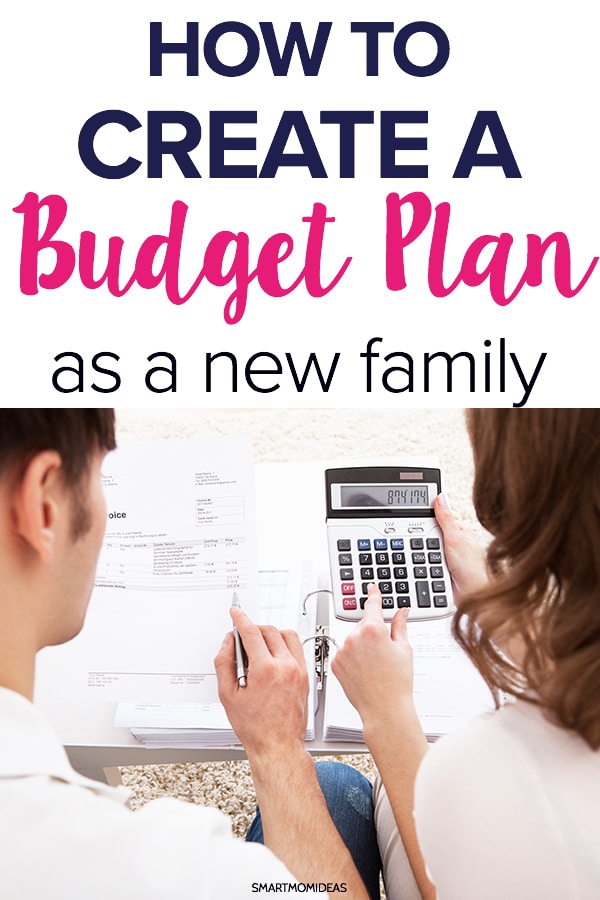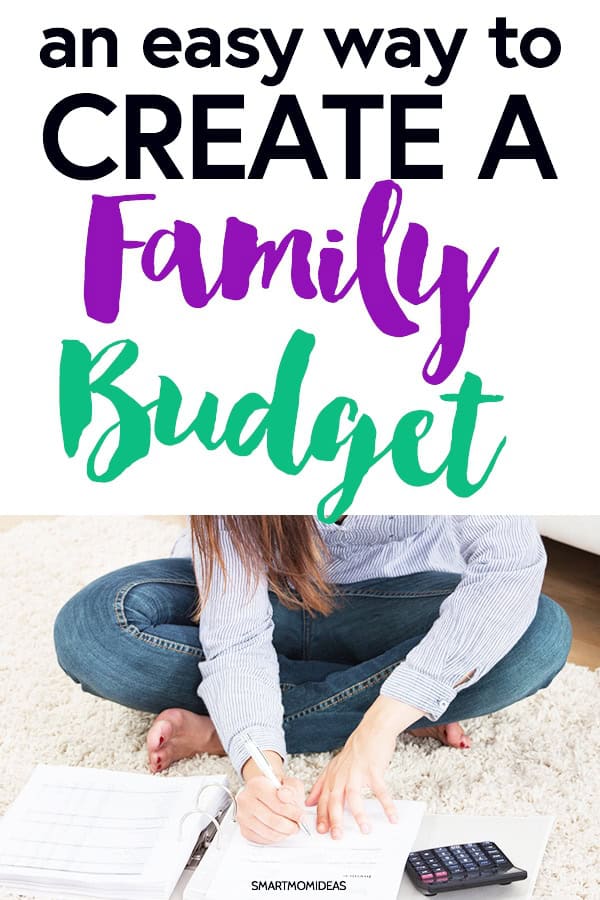Learn how easy it is to create a family budget you can actually stick to!

Have money matters been keeping you up at night, mama? It’s happened to most of us. It can feel extremely difficult to get ahead (or even stay afloat!) when the dollars in your bank seem sparse.
Creating a family budget is a smart idea! If you want to get your family on the fast-track to success (which you do!), you need to stick to a budget.
It’ll launch you into financial success and independence faster than loose spending will. It’ll also save you from the misery of debt. Or, if you already have debt, disciplined sending will help get you out of it.
Budgets are not designed to make you fail, but to enable you to succeed!
It’s simple and easy to create your family budget using a budget template. Let me show you how!
Reasons to Create a Budget
Being clear as to why you’re creating your budget is just as important as establishing your budget. If you don’t know why you’re choosing to commit, chances are you won’t be committing for very long.
People tend to think that creating a budget is boring, hard, and sticking to it long enough to see great results is even harder.
Another common thought is that it limits your fun and freedom.
I’d say it’s actually the reverse!
Choosing to budget your hard earned money thoughtfully makes you more free than choosing out of control spending habits. Both are a choice.
There will be days you feel like you want to scrap the whole budgeting thing.
When it gets hard, someone else’s reasons won’t be enough to keep you from backing down.
It all comes back down to YOU telling YOU why this matters to YOU.
Create a Family Budget Plan

Use a Budget Template
You need to have an organized way to track your income, expenses, and other areas related to your finances. A budgeting template will assure that your money no longer slips through the cracks.
Budgeting becomes a pain when all of the information you need is scattered. A template helps you to stay organized by creating a visual document. A template designed uniquely for budgeting purposes is better than storing all of your information in a notebook or even using a Google Spreadsheet.
If a budgeting app works better than a physical budgeting template, I’d recommend EveryDollar.com.
Trust me when I say, this app is nothing short of incredible! It’s easy to use and allows you to personalize your account and financial goals. I can’t imagine budgeting gets much easier than this. 🙂
1. Identify Your Income
Before deciding how you will spend your money, you need to record all of your income that consistently comes in each week and month. This should be income that can be calculated. This amount should reflect what you earn after tax deductions.
Do not include: gifts, overtime, etc…
2. Identify What You’re Currently Spending
What are you really spending your money on, mama?
You need to analyze everything that you spend money on. No purchase is too small.
If you haven’t been keeping your receipts, it’s time to start today! From manicures, eating out, coffee pick-me-ups, random impulsive shopping, gifts you buy for others, and so on.
You might be amazed at how much money seems to slip through your hands each month. Money you’ve earned that you once could not account for.
3. Create Your Budget

Now it’s time to decide what you will and will not spend your money on. Cutting your Netflix account, your gym membership, or buying more items to furnish your home is not a comfortable choice. Those are nice comforts!
But consider this… the very conveniences you’re holding on to could be what’s slowly draining your future financial success.
Budgeting templates are broken down into categories (food, gas for your car, daycare costs, rent/mortgage, etc). Decide how much you will spend from your monthly income for each category. Will you spend $400 per month on groceries for your family, or $600?
My hubby and I were surprised when we actually looked at the figures for how much we were spending just at the grocery store!
Sure, we have twins, but it was more than what we wanted to spend. So we found other ways to cut back on our grocery bill.
Make sure to be clear on which categories have flexible spending (for example, birthday party money or how much you spend at the salon), and which ones have a fixed fee (your rent).
Remember that although saving each month is not technically an expense, it does need to be added in with all of your expenses.
This is because you don’t want saving your money to be optional after you’ve paid all of your bills and then splurged on your wants.
I’d suggest saving the same percentage of your monthly income each month.
This will grow your savings and also keep you from having to borrow money from others when emergencies come up.
An emergency fund will help you avoid going into debt to cover those unexpected emergencies. It’s not a matter of if, but when they arise!
4. Set Financial Goals
I love Tony Robbins’ quote, “you can’t hit a target if you don’t know what it is”.
Set some financial goals for your family, mama. Get excited about the results budgeting will produce, and not necessarily the pain and inconvenience of your sacrifices. Make sure to set specific goals.
Here are some examples:
- Pay debt: Debt free by July 18th, 2025 at 2:00pm.
- Vacation: We will depart on our fun family vacation to Hawaii on March 20th, 2021 at 9:00am! Our vacation will last for 2 weeks.
- Save for retirement: I will have X amount saved up for retirement when I turn 60 on X date.
- Save for children to attend college: Save $30,000 by the time Bella turns 18 on March 20th, 2040
It’s okay that you don’t have every detail figured out. You can always come back to rework the details later.
Make sure to indicate which goals can be achieved short term (12 months or less), and which ones will take longer to accomplish.
Avoid setting goals you want to accomplish “before death” or “in the next 10 years” because that’s not specific.
Those types of vague goals won’t motivate you to stick to your budget when the going gets tough, mama! Always be specific.
5. Monitor Your Progress
Adjust your budget if needed. There might be areas where you decide to restrict spending a bit more.
And other areas where you can give yourself some more leeway.
Review your purchases on a weekly and/or monthly basis. It’s best not to go too long without thoroughly analyzing your spending to make sure that you’re within your budget.
Talk it over with your hubby to make sure that you’re both on the same page.
And remember, frugal living may come easier for you than for him. So encourage him rather than undervalue his efforts to stick to the plan.
Create Your Budget Plan Today
Now that you know how to create a budget plan, get started right away! It’s empowering to exercise control over your hard-earned money rather than allowing it to slip through your hands.
Sticking to your budget may be easier at some times more than others.
But if you slack up, just remind yourself why you’re doing this and how your spending habits will directly impact your family’s future.
No matter how many times you mess up or overspend, keep celebrating your success on this journey.
You got this, mama!
Remember to pin me!




